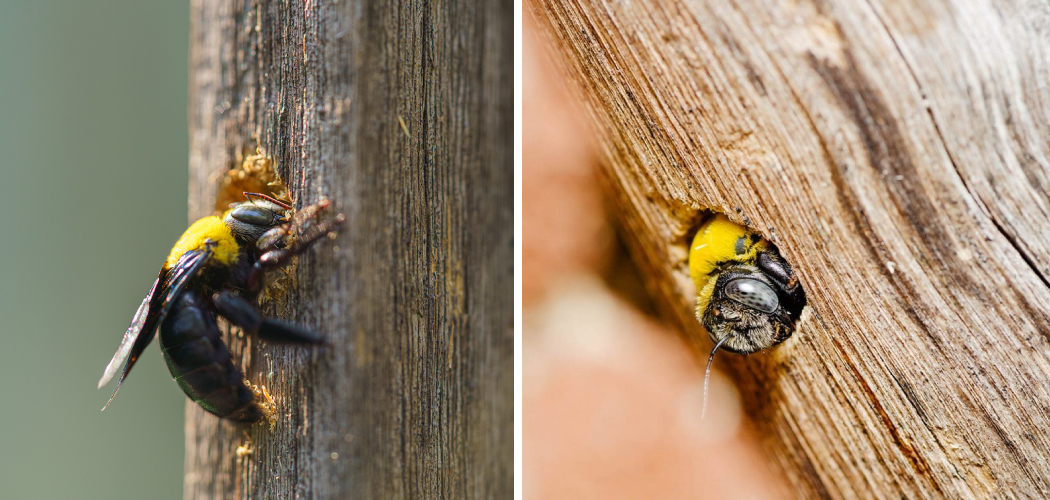Are you worried about the damage carpenter bees are doing to your wood? It’s natural to want to protect it, and with a few tips, you can ensure your wood is properly treated.
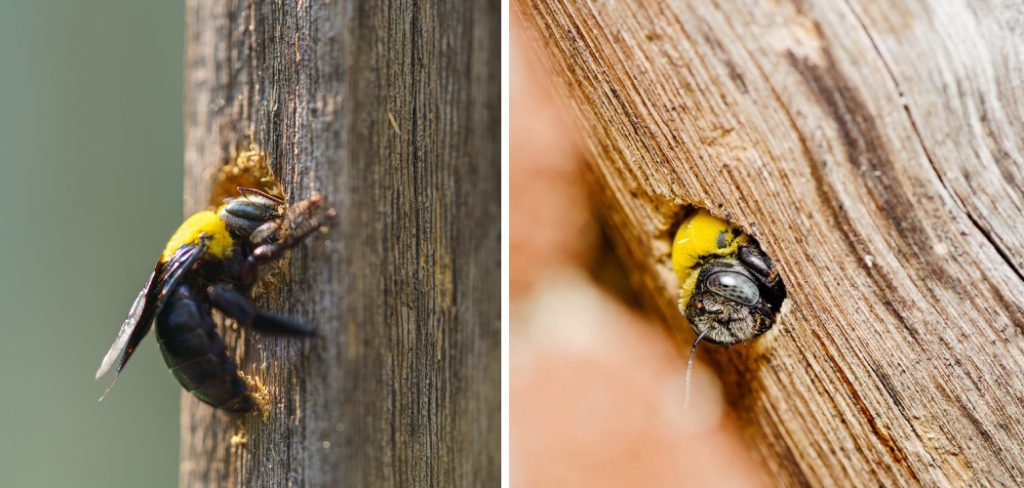
Whether you’re a homeowner or a professional carpenter, here are some steps to take to treat wood for carpenter bees.
In this blog post, we’ll be discussing how to treat wood for carpenter bees so that they won’t cause harm. We’ll look at some of the best methods for treating the wood surface as well as other prevention techniques that can protect your property from any future destruction. With a bit of preparation and some basic tools, you can ensure your wooden surfaces are safe from these destructive pests!
What Will You Need?
To treat wood for carpenter bees, you’ll need some supplies. The essential items are:
- A sprayer or brush to apply the treatment
- An insecticide designed for wood surfaces (such as a borate solution)
- Protective gear such as goggles and gloves in case of contact with the insecticide
It’s also recommended that you wear a long-sleeved shirt and pants, as well as closed-toe shoes, if you plan to enter any attics or other enclosed spaces.
10 Easy Steps on How to Treat Wood for Carpenter Bees
Once you have all the necessary supplies, it’s time to start treating wood for carpenter bees.
Step 1. Clean the Surface
Before you apply the treatment, it’s important to ensure the wood surface is clean and free from dust and other debris. This will ensure that the insecticide can stick properly and be most effective. Use a brush, mop, or rag to clean the surface thoroughly.
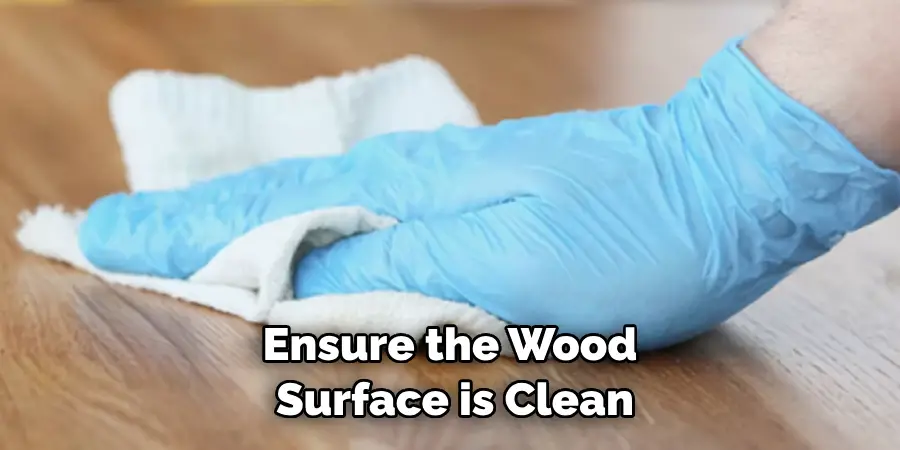
Step 2. Apply Insecticide
Once you’ve finished cleaning the surface, it’s time to apply an insecticidal solution. You can use a sprayer or brush the insecticide directly onto the wood surface. If using a spill-proof container with a nozzle, wear safety goggles and gloves when spraying the insecticide.
Step 3. Let Dry
Allow the area to dry thoroughly before moving on to the next step. This will ensure that the insecticide can take effect and work its magic! Try to keep kids and pets away from the area during this time.
Step 4. Seal the Wood
The next step is to seal the wood surface with a spray or paint-on sealant. This will help protect against future infestations by sealing any cracks and crevices the carpenter bees may try to enter through. Make sure you use a sealant designed specifically for wood surfaces.
Step 5. Apply Caulk
If you find any cracks or crevices in the wood surface, apply caulk to fill them in and prevent carpenter bees from entering. This is especially important if any exposed joints may be vulnerable to infestations. If you plan to paint or stain the wood surface, do so before applying caulk.
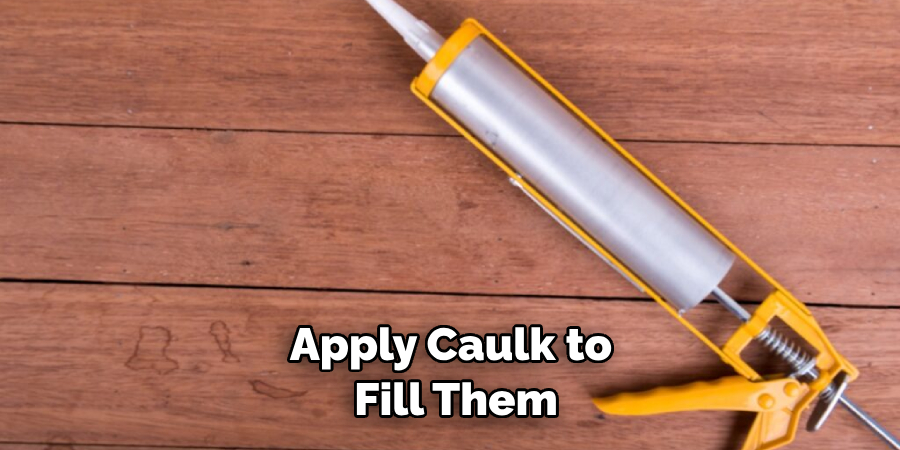
Step 6. Paint/Stain the Wood
Painting or staining the wood is an effective way to protect it from any future infestations and keep it looking nice and fresh. Make sure to use a quality sealant to provide optimal protection. Otherwise, the carpenter bees may be able to get through any cracks or crevices.
Step 7. Fill in Holes
If you find any existing carpenter bee holes, fill them with epoxy or wood filler and seal the area with caulk or paint. This will prevent future infestations from taking hold and damaging the wood further. Try to keep kids and pets away from the area while you are filling in the holes.
Step 8. Replace Old Wood
If the wood is too damaged or old, it may be time to replace it entirely. This will ensure that any new infestations won’t take hold and further damage your property. Make sure to sand down any rough edges on newly installed wood to prevent carpenter bees from entering.
Step 9. Trim Trees
Carpenter bees are attracted to tree branches, so if you have any nearby, trim them away from your property. This will help keep the bees away and reduce the chances of an infestation taking place. Remember that carpenter bees can still fly up to 20 feet away from their nests, so it’s important to be mindful of any trees or shrubs surrounding your home.
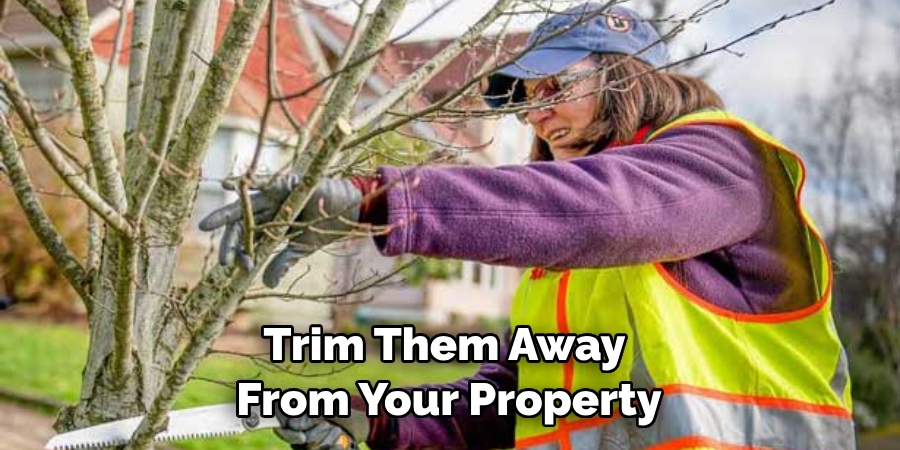
Step 10. Monitor the Area
Lastly, monitor the area where you have treated carpenter bees. Look for any signs of them returning, such as sawdust or new holes in the wood. If you see any, take steps to eliminate them quickly before they can cause further damage.
By following these steps, you’ll be well on your way to protecting your wood surface from carpenter bees. If done properly, this treatment will help keep the wood safe and looking great for years to come.
5 Additional Tips and Tricks
- Use a wood preservative such as borate or copper-naphthenate. These chemical treatments are effective at repelling carpenter bees and other wood-boring insects and protect your wood from damage for several years.
- If you have existing carpenter bee activity, use a cloud of insecticide dust, such as diatomaceous earth, to fill the existing galleries and discourage further activity.
- If you have large carpenter bee infestations, consider using a professional exterminator to help eliminate the source of the problem.
- Replace any damaged wood with pressure-treated lumber or rot-resistant material that won’t be attractive to carpenter bees.
- Consider painting your wooden structures with bright white or light-colored paint. This will help to reflect the sun’s rays and make the wood less attractive to carpenter bees. Additionally, painting provides an additional layer of protection against moisture, which can cause wood rot.
With these tips in mind, you can protect your wood structures and minimize carpenter bee damage. However, it’s important to remember that prevention is key—regularly inspecting wooden structures for signs of activity and taking appropriate preventive action is the best way to keep carpenter bees away from your property.
5 Things You Should Avoid
- Don’t use insecticides in areas where bees are active—not only will the chemicals not be effective, but they can also be harmful to other beneficial insects and wildlife.
- Avoid using repellent oils or sprays on wood surfaces, as these products don’t provide lasting protection against carpenter bee infestations.
- Don’t use plastic sheeting or tarps to cover wood—carpenter bees can easily chew through these materials.
- Don’t use stained or treated lumber for structural wood, as carpenter bees prefer unfinished woods, and the stains and treatments may not be effective at repelling them.
- Avoid leaving wood debris lying around your property, as this is a prime breeding ground for carpenter bees.
By following these simple tips, you can help prevent carpenter bee infestations from occurring in the first place. Additionally, if you’re already facing a carpenter bee problem, it’s important to take quick action and identify the source of the issue before it gets out of hand.

What Liquid Kills Carpenter Bees?
Carpenter bees can be difficult to get rid of due to their ability to bore into wood. As such, the best way to rid your property of carpenter bees is with a combination of prevention and removal methods.
If you decide to use liquid insecticides, make sure they contain active ingredients like cyfluthrin or lambda-cyhalothrin as these are the most effective at killing carpenter bees. Additionally, make sure to follow all safety instructions when using liquid insecticides and wear protective gear to avoid any potential health risks.
Another effective way to get rid of carpenter bees is by using traps. These are particularly helpful if you’re dealing with an active infestation as they can catch and kill multiple bees at once. When using traps, it’s important to make sure they’re placed in areas where carpenter bee activity is most likely to occur. Additionally, make sure the traps are checked regularly and the dead bees removed to ensure the traps remain effective.
By combining prevention and removal methods, you can successfully rid your property of carpenter bees and protect your wood structures from further damage. Additionally, it’s important to stay vigilant and inspect wooden surfaces regularly for signs of activity to deal with any potential infestations quickly.
Conclusion
In conclusion, protecting wood from carpenter bees is essential to the life span of a structure. With patience and diligence in treatment, the risk of structural damage caused by carpenter bees can be reduced or eliminated.
Additionally, understanding common carpenter bee habits will help you identify marks they leave on your wood and how to respond properly.
Plus, many products on the market offer long-term protection against future infestation and provide a necessary barrier between structural wood components and these small but powerful creatures. Taking the time to understand how to best treat wood for carpenter bees is an investment in your property’s health and wellbeing now and in the future.
Hopefully, the article on how to treat wood for carpenter bees has been helpful in providing basic knowledge of carpenter bee activity, prevention and removal methods, and understanding products available on the market. Thank you for reading!

